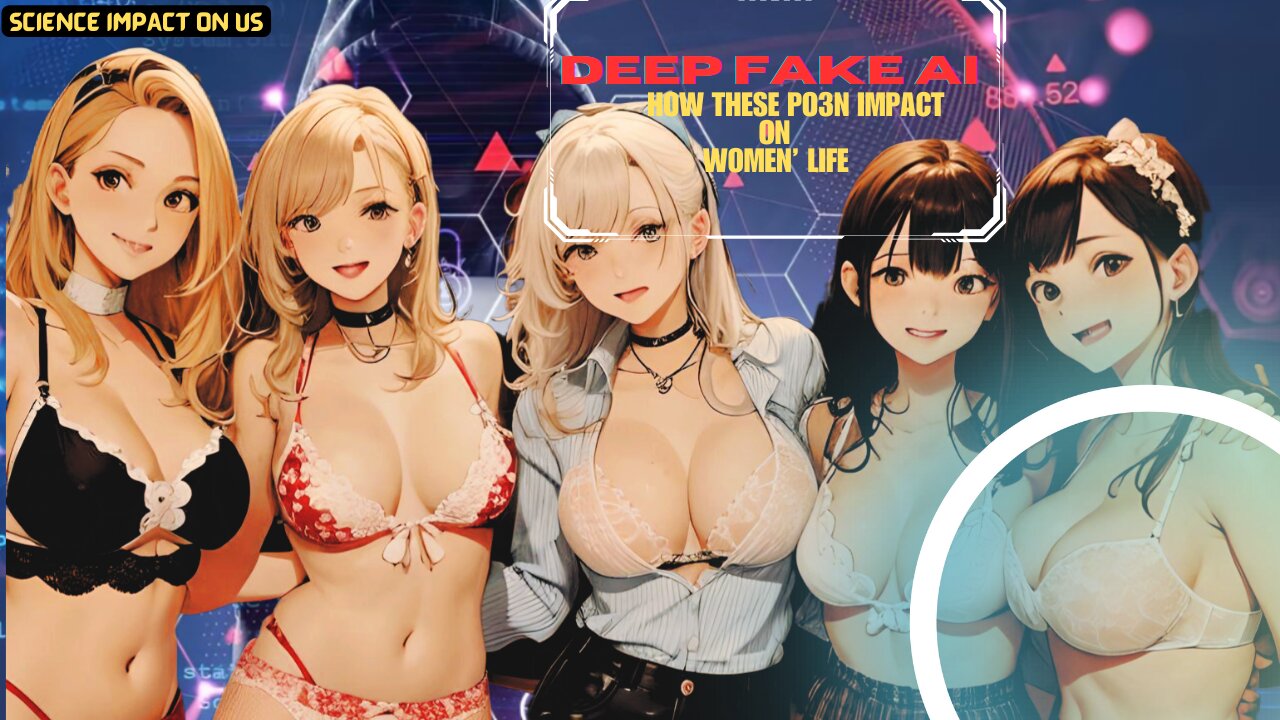Premium Only Content

Womens are getting Deepfaked Into Po3n by AI | Deepfake Po3n
Deepfake AI refers to the use of artificial intelligence (AI) techniques, particularly deep learning, to create highly realistic and often deceptive digital content, such as videos, images, or audio recordings. The term "deepfake" is a portmanteau of "deep learning" and "fake."
Here are key aspects of deepfake AI:
1. **Deep Learning Algorithms:**
- Deepfakes are primarily generated using deep neural networks, a subset of machine learning that involves layers of interconnected nodes to learn patterns and features from large datasets.
- Generative models, such as Variational Autoencoders (VAEs) and Generative Adversarial Networks (GANs), are commonly employed for creating realistic content.
2. **Face-swapping Technology:**
- One common application of deepfake technology is face-swapping, where the face of one person is seamlessly replaced with another in a video or image.
- Deep neural networks can learn facial features, expressions, and movements to make the swapped face look convincing.
3. **Audio Deepfakes:**
- Deepfake AI is not limited to visual content; it can also be applied to audio, creating realistic synthetic voices or manipulating existing recordings.
- Voice cloning algorithms use deep learning to reproduce the unique characteristics of a person's voice.
4. **Detection Challenges:**
- As deepfake technology advances, it becomes increasingly challenging to distinguish between authentic and manipulated content.
- Researchers are actively working on developing deepfake detection methods, but the cat-and-mouse game between creators and detectors continues.
5. **Ethical Concerns:**
- The rise of deepfake technology has raised ethical concerns due to its potential for misuse, such as spreading misinformation, impersonation, or creating malicious content.
- There are concerns about the impact of deepfakes on public trust, privacy, and the potential for their use in cyber attacks or political manipulation.
6. **Applications:**
- While deepfake technology has been associated with negative implications, it also has legitimate and positive applications, such as in the entertainment industry for special effects, dubbing, or creating digital avatars.
7. **Regulation and Mitigation:**
- Governments and tech companies are exploring ways to regulate and mitigate the risks associated with deepfake technology.
- Efforts include the development of legislation, public awareness campaigns, and the integration of advanced detection technologies into online platforms.
As technology evolves, the ethical and regulatory considerations surrounding deepfake AI will continue to be important topics of discussion and development. It's crucial to strike a balance between innovation and responsible use to harness the positive aspects of AI while minimizing potential harm.
-
 LIVE
LIVE
Matt Kohrs
10 hours agoGov'nt Shutdown: Stocks Whipsaw, Bitcoin Pops & Gold Hits Record || Live Trading
802 watching -
 LIVE
LIVE
Wendy Bell Radio
5 hours agoThe Schumer Shutdown
8,036 watching -
 LIVE
LIVE
LFA TV
10 hours agoDEVOTION & BREAKING NEWS! | WEDNESDAY 10/1/25
4,229 watching -
 LIVE
LIVE
Crypto Power Hour
1 hour agoWTH Is Peer To Peer CryptoCurrency Trading?
109 watching -
 1:11:31
1:11:31
JULIE GREEN MINISTRIES
3 hours agoLIVE WITH JULIE
71.4K166 -
 35:39
35:39
Producer Michael
17 hours agoROLLS-ROYCE SPECTRE TEST DRIVE GOES WRONG!
44.2K9 -
 15:42
15:42
Nicholas Bowling
15 hours ago $2.73 earnedCharlie’s MURDER Sparks COLLEGE STUDENTS to Boldly Preach the Gospel!
17.9K19 -
 40:10
40:10
Uncommon Sense In Current Times
19 hours ago $2.59 earnedDeconstruction of Christianity | Tim Barnett on Truth, Faith & the Crisis in Today’s Church
36.8K4 -
 LIVE
LIVE
Total Horse Channel
13 hours ago2025 Quarter Horse Congress * Celeste Center * Wednesday October 1st
87 watching -

The Bubba Army
23 hours agoGOVERNMENT SHUTDOWN! - Bubba the Love Sponge® Show | 10/01/25
62.7K5